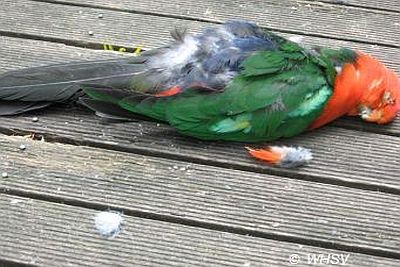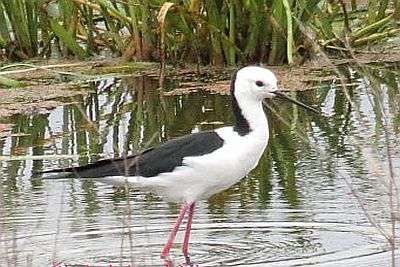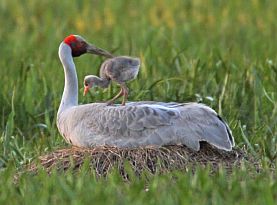Biodiversity research projects
A listing of biodiversity research projects being undertaken by various groups and organisations across Victoria.
If you are aware of a current research program or you are conducting research in Victoria or adjoining areas that involves or has implications for threatened species, communities or their habitats, please submit your information on the share a project page.
Wildlife Health Victoria - Surveillance
Location: All of Victoria.
Activities: Investigates sick and dead wildlife from free ranging populations of endemic mammals, birds, reptiles and amphibians in Victoria to understand baseline wildlife health patterns, detect changes and factors involved, and understand wildlife reservoirs of zoonotic diseases.
Partners: Members of public reporting diseased wildlife.
Contacts: Faculty of Veterinary Science at The University of Melbourne. Pam Whiteley 0400 119 301
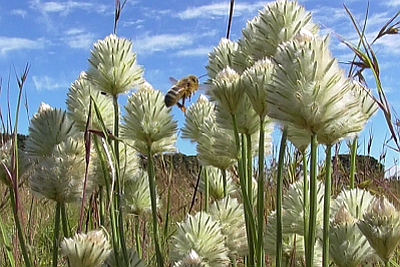
Ptilotus macrocephalus (Feather-heads) research project
Location: Victorian Volcanic Plain
Species: Ptilotus macrocephalus still persists in the fragmented Victorian Volcanic Plains but it may be experiencing an extinction debt—where long-lived individuals persist in degraded habitats but fail to establish new seedlings, threatening the long-term survival of populations
Activities: 2024-2026. This project investigates whether an Allee effect is limiting reproduction, where small populations fail to reproduce due to factors like mate scarcity, reduced pollinator attraction, or low genetic diversity. By comparing seed set and recruitment across 15 populations of different sizes—and examining seed predation and pollinator activity—this research aims to uncover barriers to reproduction and inform conservation efforts.
Lead role: Susan Kachaniwsky, Botany and Plant Ecology Lab | La Trobe University (Bundoora campus)
If you have observations regarding Featherheads or would like to help please contact: Susan Kachaniwsky
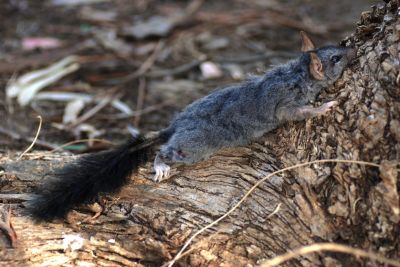
Managing the potential impacts from development and urbanisation on the threatened Brush-tailed Phascogale
Location: Central Victoria, commencing 2017 to 2025.
Activities: Investigate effective nestbox designs, barriers that impede dispersal, impact of fire and mitigation of other threats.
Contacts: William Terry, Southern Cross University PhD. 03 5421 9674 or e-mail
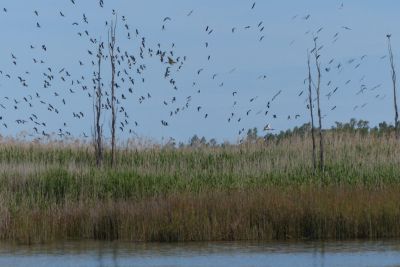
Waterbird breeding and movements: Knowledge for water managers
Location: Murray-Darling Basin, with Victorian sites including Barmah Forest, Kerang Lakes and Kow Swamp.
Species: Using GPS satellite tracking of Straw-necked ibis, Royal spoonbills and Australian white ibis to determine movement and habitat use patterns over time.
Activities: Collecting information on colonial-nesting waterbird breeding and movements across the Murray-Darling Basin. Conducting on-ground field surveys and deploying motion-sensing and time-lapse cameras on nests in breeding colonies to quantify survival rates, predation and bird behaviour.
Lead role: CSIRO Land and Water, University of NSW and University of Canberra. Funded by the Commonwealth Environmental Water Office through the Murray-Darling Basin Environmental Water Knowledge and Research Project (MDB EWKR).
Contacts: Dr Heather McGinness, MDB EWKR Theme coordinator. See the Waterbird breeding and movements website
ClimateWatch
Location: All of Victoria.
Activities: Citizen Science, monitor ing and observations to collect Australian phenology data during seasonal events that will help understand the effects of climate change.
Partners: Earthwatch Institute, Helen MacPherson Smith Trust, Gaia Resources, Cool Australia, Atlas of Living Australia, and the Biodiversity Climate Change Virtual Laboratory.
Contacts: Earthwatch Institute +61 3 9016 7590
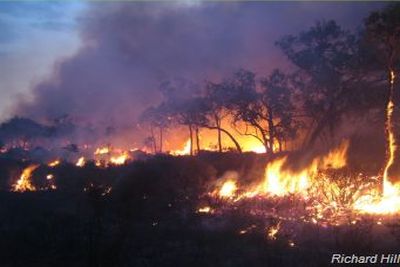
Using fire to manage biodiversity in fragmented landscapes
Location: Glenelg region, Victoria.
Activities: This project addresses two key knowledge gaps: (1) the combined effects of fire and fragmentation on animal movement (2) the implications of current and future fire regimes for native animal populations. Project area focuses on fragmented stringybark woodland of southwest Victoria and southeast South Australia as a study system.
Lead role: University of Melbourne with Monash University, DELWP, DEWNR, Parks Victoria, SA Water, CFA, Glenelg Hopkins CMA, Trust for Nature.
Contacts: Holly Sitters
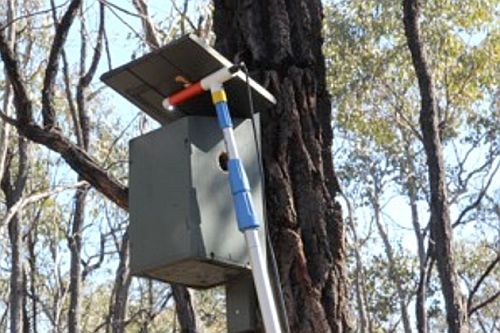
Nest box research for small arboreal mammals
Location: Bendigo, Victoria.
Activities: Long-term research into nest box design, installation and management of woodland areas to support small arboreal mammals such as the Brush-tailed Phascogale and Sugar Glider.
Lead role: Bendigo Field Naturalists Club (K. Thomas), Southern Cross University (R. Goldingay).
Contacts: Bendigo FNC
South West Victoria Brolga research project
Location: South West Victoria
Activities: Use satellite transmitters fitted to a number of Brolgas to investigate their movements, spatial requirements, and vulnerability to collision with man-made structures.
Partners: Commonwealth Department of the Environment, Water, Heritage and the Arts, the Victorian Department of Sustainability and Environment, Sustainability Victoria and the wind energy industry.
Contacts: Inka Veltheim
Project: ‘Recent ecological change in Australia’ survey
Location: Across Australia to April 2018
Activities: Community members can contribute to a survey that will collect stories and anecdotes that will help to build a national picture of the kinds of ecological changes that have been occurring across the country over the past 10-20 years, or more. Participants would need to be able to select a natural area (e.g. a local region or farm, a Nature Reserve, urban bushland etc.) that you have been familiar with for at least the last 10 years.
Body conducting research: CSIRO Land and Water and the Department of the Environment and Energy.
Contact: CSIRO ‘Recent ecological change in Australia’ survey
Project: Eastern Barred bandicoot projects
Relevant threatened species: Eastern Barred Bandicoot. Three research projects being conducted (1) Impact of Toxoplasma disease on EBB's (2) The role Eastern Barred Bandicoots play as ecosystem engineers (3) Training Eastern Barred Bandicoots to recognise cats as predators
Location: (1) Phillip Island and French Island (2) Churchill Island (3) Werribee Open Range Zoo
Body conducting research: (1) Kath Adriaanse, University of Melbourne (2) Lauren Halstead, Deakin University (3) Rachel Taylor, University of Melbourne.
Contact for further information: Eastern Barred Bandicoot Newsletter -Warron, Issue 23 May 2017
Project: The Ecological Time Machine
Location: Victoria & SE Australia.
Activities: Development of a tool to predict the distribution of plants and animals in the past. This information helps decisions to be made about where we protect habitat, and where the best prospects for habitat restoration and rehabilitation are.
Body conducting research: Arthur Rylah Institute for Environmental Research (ARI)
Project: Southern Australian Sea Turtle
Relevant threatened species: leatherback turtle, loggerhead turtle, flatback turtle, green turtle, olive ridley turtle and hawksbill turtle. The project aims to determine what drives the occurrence of sea turtles off the coast of southern Australia.
Location: southern Australian region.
Body conducting research: The project is being developed by Deakin University’s Professor Graeme Hays and Dr Margie Morrice. They are collaborating with southern Australian marine fauna researchers and database managers. Community observations welcome.
Contact for further information: Southern Australian Sea Turtle
Project: Wombat State Forest Project
Relevant threatened species: Forest Fauna. The sites (each 1 hectare) were established in 2006.
Location: Wombat State Forest
Body conducting research: Wombat Forestcare (initial research in partnership with the Arthur Rylah Institute for Environmental research)
Contact for further information: Gayle Osborne info@wombatforestcare.org.au
Project: Blue Whale research
Relevant threatened species: Blue Whale
Location:South West Victoria (Cape Otway to Eyre Peninsula, South Australia), November to May.
Body conducting research:Whale Ecology Group - Deakin University, Warrnambool
Contact for further information: Peter Gill, Whale Ecology Group, Deakin University, Warrnambool Blue Whale Study
Topic of research: The impact of severe wildfire on small mammals Grampians National Park case study
Relevant threatened species: Small mammals
Location: Grampians National Park
Body conducting research: Contact Mike Stevens, Grampians National Park
Project: Eastern Grey Kangaroo research - this project commenced in 2004 and is still active.
Relevant threatened species: This project not only has implications for the ecology of Kangaroo populations (which are not threatened) but also the impact they have on ecological processes and implications for many species of threatened flora and fauna.
Location: Anglesea, Victoria
Body conducting research: Post-graduate students and academic staff from the Department of Zoology, The University of Melbourne.
Contact: kangaroos-contact@unimelb.edu.au
Further information: ANGAIR (Anglesea, Aireys Inlet Society for the protection of flora and fauna).
Project: Millipededs of south-west Victoria
Relevant threatened species: None listed yet
Location: The entire SWIFFT area
Body conducting research:
Contact for further information: Dr Bob Mesibov, PO Box 101, Penguin TAS 7316
Project: Grassy Ecosystem Research Initiative
Relevant threatened species: Native Grassland communities
Location: Volcanic Plains, Chepstowe, Illabarook Recreation Reserve,
Body conducting research: Dept. of Botany, La Trobe University,
Contact for further information: Dr John Morgan
See also: Lowland and Grassy Ecosystems Research Initiative
Project: Long-term Ecological Grazing Project (LTEG)
Relevant threatened species: Native Grassland
Location: Volcanic Plains, Birregurra, Darlington, Hamilton
Body conducting research: Arthur Rylah Institute for Environmental Research (ARI), PlainsTender and Grain&Graze
Contact for further information: Heidi Zimmer (ARI) 94508600
See also: Long Term Ecological Grazing Project – research results to date
Topic: Fire ecology Long-nosed Potaroo and Southern Brown Bandicoot project
Relevant threatened species: Long-nosed Potoroo and Southern Brown Bandicoot
Location: Glenelg and Otway regions, 2009-2011
Contact for further information: Justine Smith, via Richard Hill 03 55542302
Topic: Grassy Groundcover Research Project
Relevant threatened species: Native grassland communities
Location: 13 sites across 5 CMA regions
Body conducting research: Greening Australia (Victoria) and Melbourne University
Contact for further information: Grassy Groundcover Project
Topic: Determining appropriate ecological fire regimes to manage faunal biodiversity in large tracts of the Southwest Heathy Woodlands of Victoria
Relevant threatened species: Focus on small mammals, herpetofauna, insects. Production of ecological burning strategies for West Wimmera woodlands by 2009
Location: West Wimmera woodlands
Body conducting research: Melbourne University & DEPI
Contact for further information: Richard Hill, DSE Casterton (03) 5554 2302
Topic: Habitat 141 research
Location: Western Victoria
Body conducting research: organised via Parks Victoria
Contact for further information: Dr Liz Dalgleish, Strategic Policy Officer - Parks Division, 0407 349 152
Topic: Brolga Research Project
Relevant threatened species: Brolga
Location: South-west Victoria
Body conducting research: Project leader, Inka Veltheim, University of Ballarat
Contact for further information: Victorian brolga study also South-west Victoria brolga research
Topic: Wildlife Health Surveillance Victoria
Relevant threatened species: Any sick or diseased native fauna
Location: Across Victoria
Contact for further information: Pam Whiteley 0400 119 301 Faculty of Veterinary Science, The University of Melbourne, Werribee.
Topic: Ancient Greenling project
Relevant threatened species: Ancient Greenling Damselfly and any other threatened spp
Location: South-west region, Wilsons Promontory, Goulburn River floodplain wetlands (Victoria)
Body conducting research: Arthur Rylah Institute for Environmental Research, Department of Sustainability and Environment
Contact for further information: Di Crowther, 0394508613, ARI, DSE Heidelberg



